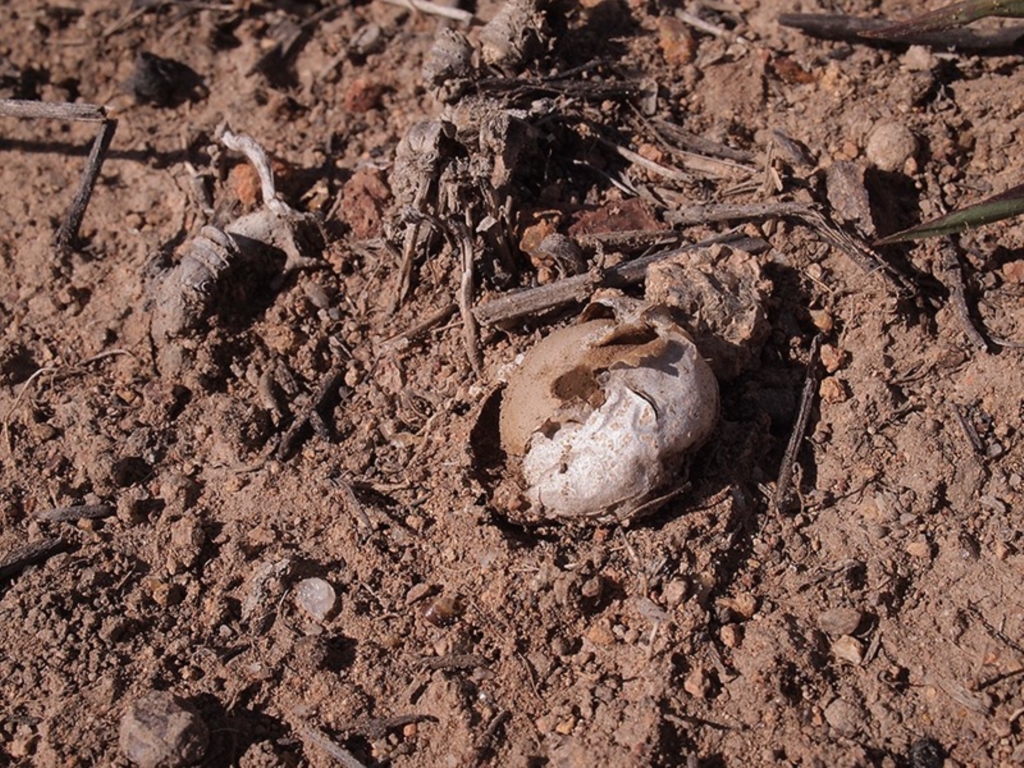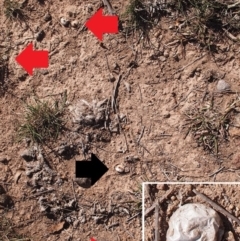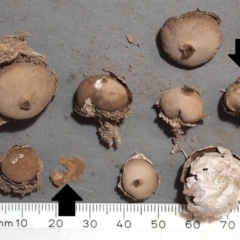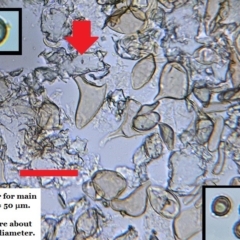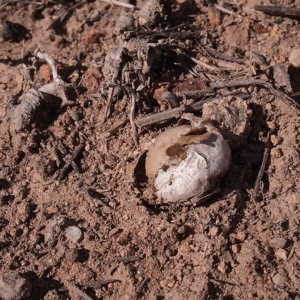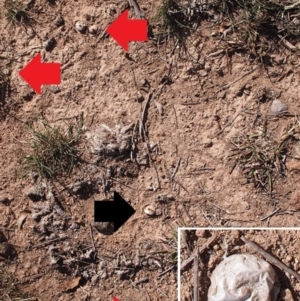1 Weston, ACT
Identification history
| Disciseda australis | 29 Apr 2019 | Heino1 |
Identify this sighting
Please Login or Register to identify this sighting.
2 comments
Heino1
wrote:
30 Apr 2019
The fruit body in Photo 1 has lost about half of its outer covering (or exoperidium). In Photo 2 you see a fruit body at an earlier stage of development, the arrow pointing to an anchoring, root-like bundle of hyphae. The arrows in Photo 3 point to five fruit bodies (the black arrow to the subject of Photo 1). The lowermost fruit body still has an intact exoperidium (though loosely attached, as the wrinkles suggest). The left arrow in Photo 4 points to a fragment of exoperidium (showing the brown, inner surface) that fell off the fruit body to its left, as I was placing it on the grey board. The right arrow points out the raised, tubular mouth. The fruit body at the lower right is the same as that in the Photo 3 inset. I collected and wrapped it as carefully as I could but, as I’d expected, some of the very thin and fragile exoperidium broke off between field and bench. In three of the fruit bodies you see both mouth and root-like anchor, at opposite sides of the fruit body, showing that in this species the mouth is always at the top (unlike Disciseda candida, where the mouth develops at the bottom and ends up at the top when the mature fruit body becomes loose and turns over). The exoperidium is made up of filamentous hyphae, swollen cells of various shapes and adhering soil grains. In the main part of Photo 5 you see a number of those brown, swollen cells and many soil grains (with the arrow pointing to one of the latter). The insets show spores (unfortunately moving a bit in the microscope mount). Each has a short stump and and an ornamentation of very fine warts.
Location information
- Coordinates 149.065556-35.336944
- Maps Oakey Hill
- Places Weston, ACT
Sighting information
- 4 - 15 Abundance
- 22 Apr 2019 12:00 AM Recorded on
- Heino1 Recorded by
Species information
- Disciseda australis Scientific name
- Common name
- Not Sensitive
- Local native
- Non-Invasive
- Machine learning
